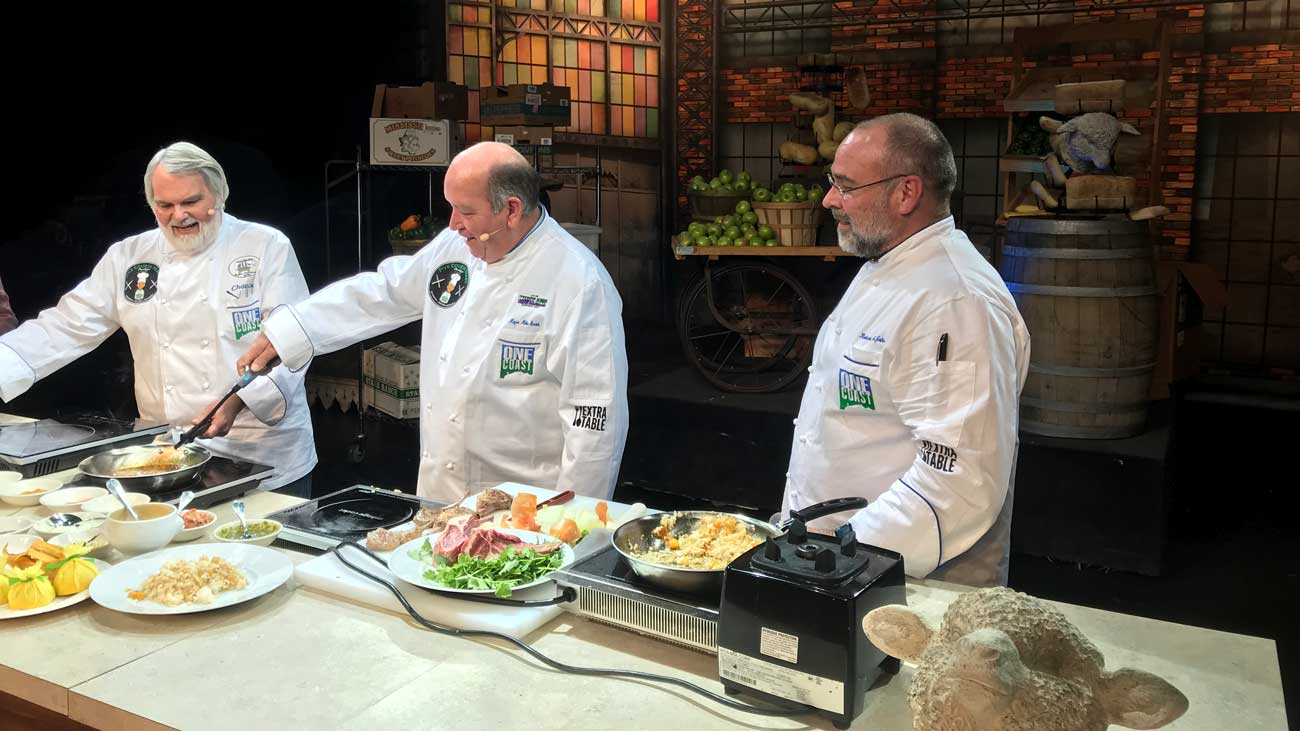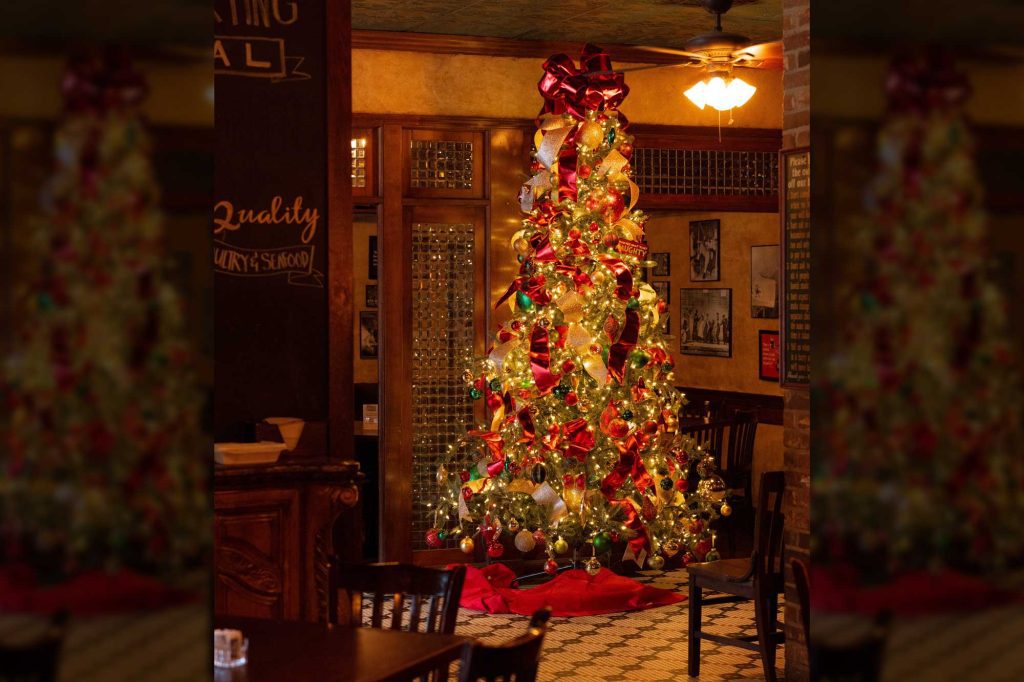The first time I sat at a communal table— other than at a family or school function— was also the first time I ever ate at K-Paul’s restaurant in New Orleans. I didn’t really like the concept initially, but in that restaurant, back then, one had no choice.
It was one of the first times I took the girl who would eventually become my wife to New Orleans. At the time, I probably wanted a romantic table for two off in a corner somewhere. Instead we sat at a picnic table next to a couple from Michigan, and across the table from a South Florida couple, both of whom complained about the food being too spicy the entire time. I was miserable.
Twelve years— and hundreds of restaurants— later, my wife, three-year old daughter, and I were in the Napa Valley area. On the recommendation of one of my chef instructors at The Culinary Institute of America, we ate dinner at a small French eatery in Yountville, Bistro Jeanty. We didn’t have reservations, so we opted to sit at the community table. It was a blast.
I can’t remember any details about the restaurant guests who sat next to us, but they were all interesting, fun, and engaging people. There was great energy in the room, and I remember eating the best cassoulet I have ever tasted.
Over the years my priorities have changed. Maybe it’s age, I don’t know, and don’t really care to take the time to psychoanalyze the root cause of the conversion. All I know is that I enjoy the food aspect in a restaurant more than anything else.
I could care less about décor, as long as it’s clean. I can overlook spotty service as long as the food arrives to the table in a timely manner. No one needs to pamper me. I am all about the food.
I plan my trips to New York around restaurant visits. Sure, we visit museums, and attend shows, but all of those things are secondary to the food. In New York, I’ve found that one can eat almost anywhere he or she wants as long as you don’t care what time you eat and where you are seated. No problem here. Again, for me, it’s all about the food.
I would always prefer to sit at the food counter and watch the cooks work. Even though I don’t drink anymore, I’ll sit at the bar in a New York millisecond if it means I get to eat dinner in a restaurant that’s been on my got-to-get-to list.
As a single man, I used to eat at boarding houses. Part of the reason was because they served home-cooked meals for cheap, but I also enjoyed listening to the old men who were sitting around the table, sharing a meal, and solving the world’s problems.
I realize that I am not your typical restaurant customer. Most surveys done by the industry show that patrons are more interested in service than they are food. I have seen reports where people actually ranked bathroom cleanliness over quality of the food. Ultimately, some people just want to ingest as much grub as they can consume, for as cheaply as they can. It’s not about taste, or service, or the table dynamic, just sustenance, and that’s OK. There are plenty of restaurants that fill that need.
Back to Bistro Jeanty, the entire evening was memorable from appetizer to dessert. The food was wonderful and the table dynamic was extraordinary. On the walk back to our hotel, I told my wife that I was going to put a community table in a restaurant one day.
Eleven years later, that day has come. I opened a new restaurant a few weeks ago, and a large part of the front-of-the-house concept— almost 10% of the total seating— includes a community table. To my knowledge, outside of a boarding house, it’s the first one in town.
Some of the new customers are leery, others prefer privacy, and still others begrudgingly sit there because it’s the lesser of two options, one of which is waiting 45 minutes to be seated. We certainly respect all of those guests and their preferences.
Yet there have been a substantial number of patrons who “get it.” They love the community table. When the chemistry is right, it’s a very fun place to be. I love walking up and checking on guests who have made new friends while sharing a meal.
I have always maintained that most of life’s best memories are usually centered on or around a food event or meal.
In conclusion, and for the record, the food at K-Paul’s has never been too spicy for me, and I have still never eaten a cassoulet better than Chef Philippe Jeanty’s.
Bistro Jeanty’s Cream of Tomato Soup in Puff Pastry
½ cup butter unsalted
½ lb. Yellow onions-sliced
6 ea. Garlic cloves
1 ea. Bay leaf
½ Tbl. Whole black peppercorns
1 tsp. Dried thyme leaves
1/4 cup tomato paste
2 ½ ib. tomatoes-ripe, cored, and quartered
1 cup water (no more-use only if tomatoes are not ripe and juicy)
4 cups heavy cream
2- 4 Tbl. Butter
salt to taste
½ tsp. Ground white pepper
1 lb. Puff pastry-or store bought sheets
1 ea. Egg- beaten with 1 Tbl. of water
Procedure
Melt the ½ cup butter in a large stockpot over medium-low heat. Add the onions, garlic, thyme,
bay leaf and peppercorns; cover and cook for about 5 minutes. Do not let the onions color. Add tomato paste and lightly “toast” the tomato paste to cook out the raw flavor the add tomatoes, and water if needed. Simmer over low heat for 30-40 minutes, until the tomatoes and onions are very soft and broken down.
Puree by passing through a food mill. A food mill works best however you may use a blender in batches or a handheld immersion blender until finished, the strain. Return the soup to the pot.
Add the cream, salt, white pepper and remaining butter to taste. Bring soup to a simmer the remove from heat. Allow the soup to cool for two hours or overnight – in the refrigerator.
Divide the soup among six 8-ounce soup cups or bowls. Roll out the puff pastry to 1/4 inch. Cut into 6 rounds slightly larger than your cups. Paint the dough with the egg wash and turn the circles, egg wash side down, over the tops of the cups, pulling lightly on the sides to make the dough somewhat tight like a drum. Try not to allow the dough to touch the soup. These may be made up to 24 hours in advance and covered with plastic in the refrigerator.
Preheat oven to 450 degrees.
Lightly paint the top of the dough rounds with egg wash with out pushing the dough down. Bake for 10-15 minutes, until the dough is golden brown. Do not open the oven in the first several minutes of cooking as the dough may fall. Serve immediately.
Serves 6
© www.bistrojeanty.com Philippe Jeanty



